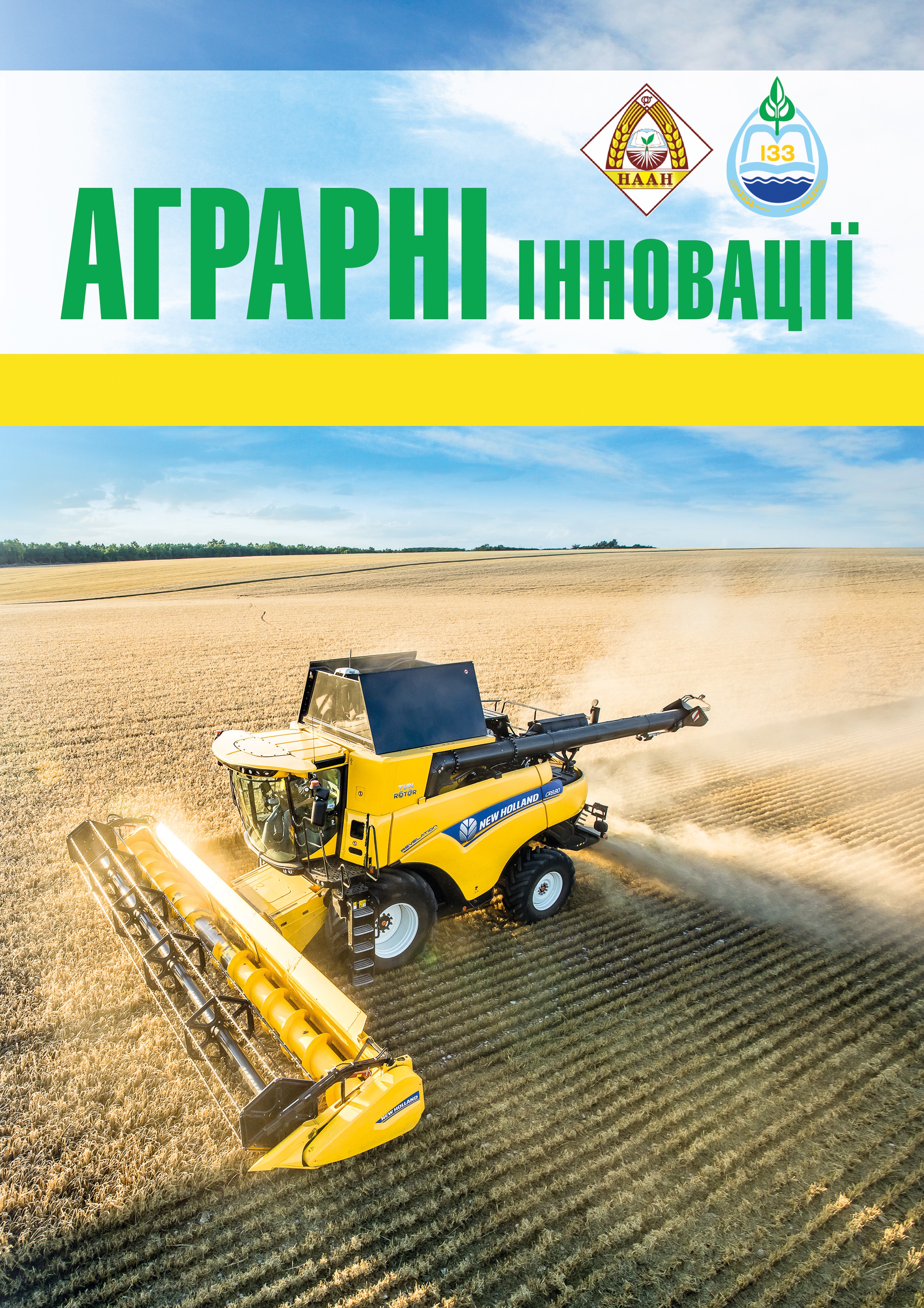IMPURITY OF SOWING AND PRODUCTIVITY OF CROP ROTATIONS DEPENDING ON CORRELATION OF CULTURES AND SYSTEMS OF TILLAGE OF SOIL ON IRRIGATION OF SOUTH OF UKRAINE
Abstract
By the purpose of the article was scientific to ground the optimal parameters of correlation of competitive cultures of irrigated agrocenosis; determination of the phytosanitary state of sowing depending on correlation of cultures; establishment of reaction of cultures on a different satiation by them row crop rotations of short rotary press. For realization of researches used the field, laboratory, statistical and calculation-comparative methods. Results of researches. By the account of impurity of sowing of agricultural cultures in crop rotations № 1 and № 2 it is set that the common amount of weeds at three terms of determinations remained unchanging Their amount at the beginning of vegetation was 20,8 and 19,5 pieces/m2, before chemical treatment grew to 25,0 and 27,2 pieces/m2 accordingly. At the same time on the end of vegetation of agricultural cultures in a crop rotation № 2 with two fields of soy, corn on grain and winter barley the quantity of weeds diminished on 0,5 pieces/m2 (15%). Account of impurity of sowing of agricultural cultures in 2-field crop rotations testify that in a crop rotation № 3 the amount of families of weeds grew to 8, and kinds to 11. The greatest was specific gravity of weeds of family cabbage, which made 50,3 %. In a crop rotation № 4 5 families and 10 types of weeds are educed. In our researches in crop rotations with a different satiation grain and technical crops the productivity of corn was scope from 10,0 to 14,8 t/ha, soy – 3,15–3,52 t/ha, barley winter and wheat winter according to 4,63–7,17 t/ha. Examining the indexes of economic efficiency of crop rotations which was investigated, it is possible to draw conclusion about advantage of crop rotation № 3 (corn, corn,soy, wheat winter). The cost of gross products calculating on a 1 hectare of area of crop rotation made 15 197 UAH with the level of profitability 117,7 %. Conclusions: in the link of grapple crop rotation on livery soils of south region at irrigation the best results were provided by the system of different deep dump tillage. Replacement of basic tillage of soil deep and shallow plowless results in worsening of the phitosanitary state of sowing, declines of the productivity of agricultural cultures and productivityof crop rotations; satiation of 4-fields crop rotations soy to 50 % assisted diminishing of impurity of sowing on 10–15 %. In 2-fields crop rotations optimal on the phitosanitary state is a crop rotation № 3 (soy, wheat winter), which assisted diminishing of amount of weeds on 24 % as compared to a crop rotation № 4.
References
2. Шелудько О.Д,, Марковська О.Є., Репілєвсь-кий Є.В. Ефективність бакових сумішей гербіцидів та регуляторів росту на озимій пшениці. Пропозиція. 2013. № 6. С. 116–117.
3. Марковська О.Є. Оптимізація боротьби з бур’янами в короткоротаційній сівозміні за умов зро-шення на півдні України. Вісник Дніпропетровського державного аграрно-економічного університету. Серія: Сільськогосподарська екологія. Рослинництво. Землеробство. 2017. Вип. 4 (46). C. 26–29. URL: http://ojs.dsau.dp.ua/index.php/vestnik/article/download/1017/882 (дата звернення: 25.04.2018).
4. Бука А.В. Передовi технології. Сільський журнал. 2001. № 11. С. 14.
5. Циков В.С., Матюха Л.П., Ткаліч Ю.І. Ефектив-ність засобів знищення бур’янів при вирощуванні куку-рудзи. Вісник аграрної науки. 2007. № 7. С. 19–24.
6. Вожегова Р.А. та ін. Методика польових і лабо-раторних досліджень на зрошуваних землях : моногра-фія. Херсон : Грінь Д.С., 2014. 286 с.
7. Ушкаренко В.О. та ін. Статистичний аналіз результатів польових дослідів у землеробстві : моногра-фія. Херсон : Айлант, 2013. 410 с.






